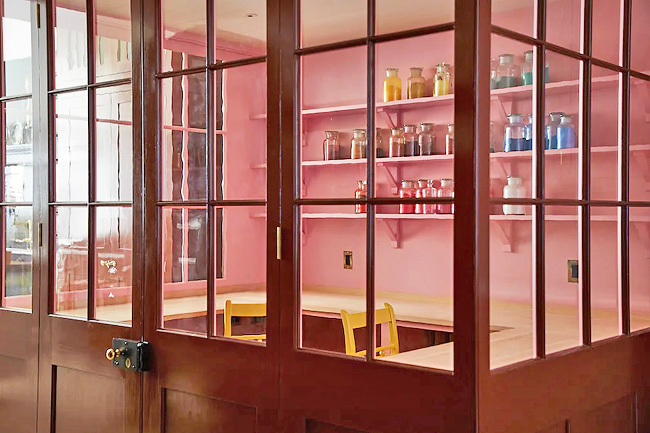Laura Fenton
THE WASHINGTON POST – After years of open-concept spaces dominating the world of home design (thanks, HGTV), separate spaces began to creep back into wish lists during the pandemic. Walls are a natural solution for creating structure and privacy, but they are also arriers to light.
Enter the interior window.
These openings in walls are among the many architectural innovations that Shakers contributed to the design world.
Shaker craftspeople often included them to let daylight into rooms that would otherwise be dark. They dubbed the resulting effect “borrowed light”, and it’s just as relevant a technique today as it was before the advent of electric light – especially in small homes and apartments.
“Recently, we’ve been doing a lot more interior windows,” said United States (US) Design Director for Plain English Imogen Pritchard, a British custom cupboard maker that has a showroom in New York City.
Now that people are gravitating away from big open-space floor plans, Pritchard said, the advantage of adding glass to a room division is that it lets light travel through without making the space appear smaller.
“You end up with spaces that feel separate but connected,” she said. This can be especially valuable in tiny homes or in apartments that have been carved out of larger, grander apartments from an earlier era, said architect Andrew McGee, co-founder of Format Architecture Office in New York City.

Interior windows also create what Paris-based interior designer Marianne Evennou calls “openings for the eye to escape”. They, along with wall openings and glass-paned doors, which are hallmarks of Evennou’s work, can make a small room feel less claustrophobic and can add interest to a home.
Done right, an interior window also ups a home’s charm factor, Pritchard said, noting that Plain English designs interior glazing with wood-framed glass panes modelled after the ones used in historical homes.
“I think the small panes help (an interior window) feel softer and a bit more like furniture,” she said. Evennou also likes paned glass, but she opts for steel-framed designs for an industrial look.
Replacing solid walls with ones fitted with interior glazing is particularly useful for dividing a kitchen from a main living space – a sort of compromise between an open plan or a closed off kitchen. It’s also a traditional technique in the below-stairs kitchens in English country homes, where many cooks worked simultaneously, Pritchard said.
She also likes to add windows to a pantry to keep it from feeling like “a dark hole.”
“Sometimes we even do glass shelves in front of the glass, so you can see through,” she added.
And if concealing a messy space is a concern, Pritchard suggests using fluted or reeded glass, which lets the light pass through but obscures what lies beyond – effectively borrowing light, but not the view. McGee’s firm used ribbed glass to bring light into a windowless entry hall while still offering privacy to the combination office/guest room on the other side. Frosted glass also works well for this, he said.
Experts said it should be possible to put an interior window in most non-load-bearing walls.
The project will involve commissioning a custom piece of glass and hiring a professional for installation. (The pros caution that it won’t look right if your contractor just sticks an exterior window into a wall).
Whether you need to hire a designer or an architect will depend on the existing space and what you hope to create. Either one can look at your home and give you a rough idea of what is possible.
They’ll need to probe the walls, though, to determine what pipes, wiring and structural elements need to be accounted for.
If tearing up walls and ordering custom glass sounds intimidating, there are other ways to borrow light: Swap an existing door for one with glass panels, for example. Or consider adding a transom window above a door, something both Plain English and Format Architecture Office like to do when the ceiling height allows for it.
Although additional light is a boon for small spaces, there are some drawbacks. Depending on the type of glass and how it is installed, you may sacrifice some acoustic insulation.
And Deeksha Gaur, a homeowner in New York City, discovered that the airflow in her home (both heating and cooling) was affected when she closed off the corner of her L-shaped living room with a windowed wall. Privacy was also a concern for Gaur. She uses the room as a home office and a guest bedroom, so she added roller shades to the windows. Minor hiccups aside, Gaur loves her interior windows, and the addition was so successful that her downstairs neighbour copied the idea. (Based on Gaur’s experience, they left a gap above the windows to help with air circulation).
Opening walls or building new ones to add an interior window is also costly (ie, thousands of dollars), but the pros and homeowners we spoke to said that borrowing light is a worthwhile investment if you can swing it.
As for the term “borrowing light”, McGee deliberately talks about “stealing” it instead. He said that’s because light is priceless, and people should go to great lengths to maximise it.








